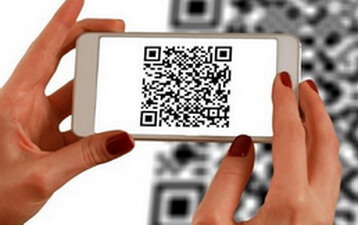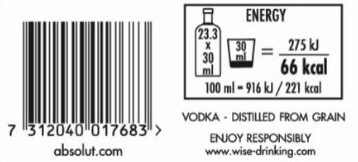European producers of alcoholic beverages innovate in consumer information and pioneer digital product labeling
The end in the random search, via the internet, for the caloric content of alcoholic beverages. The Memorandum of Understanding (MoU) ensures that consumers have easy access to reliable, accurate and meaningful information, both in the bottle itself and on the internet, said Sarah Melina Siebel, Spirits Europe Internal Market Manager, in an interview with Bernstein Group where he referred to the innovative digital labeling of alcoholic beverages and the initiative of self-regulation of the industry.
Alcoholic beverages, for practical and historical reasons, have in the past been exempted from the obligation to label food labels. However, every time consumers wanted to know the calorie content of their favorite beverage, they searched the internet hoping that the information they found was correct. “In short, the goal of the Memorandum of Understanding is for the industry to ensure full transparency of consumer information and for this information to be provided in a meaningful and comprehensible manner,” Siebel said.
A Memorandum of Understanding (MoU) was signed between the industry and the EU Health Commissioner in June 2019, in which the industry undertook to provide information on the caloric value of the drink on the label, as well as a list of ingredients with detailed information on products on a web site. The initiative had measurable goals for its implementation and the Sector should be gradually adapted.
“The biggest challenge in this initiative was the fundamental difference between self-regulation and legislative binding rules! When binding rules are introduced, it is the duty of the producers simply to enforce them within the time limit provided by law. But in the context of the self-regulation of a branch, the rules between the members must first be defined. It took time, as products, traditions and opinions differ across Europe! “
Today, European producers of alcoholic beverageshave successfully committed to the first milestone. “Our first progress report published on 5 May shows that the industry has managed to ensure, by 31 December 2020, that approximately 1 in 4 bottles already have such information, a rate which is expected to increase to 50% and 66% by the end of the year. 2021 and 2022 respectively “, pointed out Ulrich Adam, General Manager of SpiritsEurope

How digital labels works
According to Sarah Melina Siebel “by scanning a QR code on a bottle, you will be able to access all relevant information about this product on the internet! The E-label electronic signal platform that we are developing together with the wine sector is fully funded by the industry and will be open to all producers. The version of the platform will be piloted within the next two months for the full operational installation a little later. Digital labeling is an amazing way of overcoming the space of a physical label, which is obviously very limited. If we want to meet the pace of our time and the expectations of consumers, this must change. “Therefore, the Commission certainly needs to find ways to integrate digital labeling rules into the revision of the EU General Food Labeling Regulation in 2022.” Ms. Siebel pointed out at the end of her interview.


